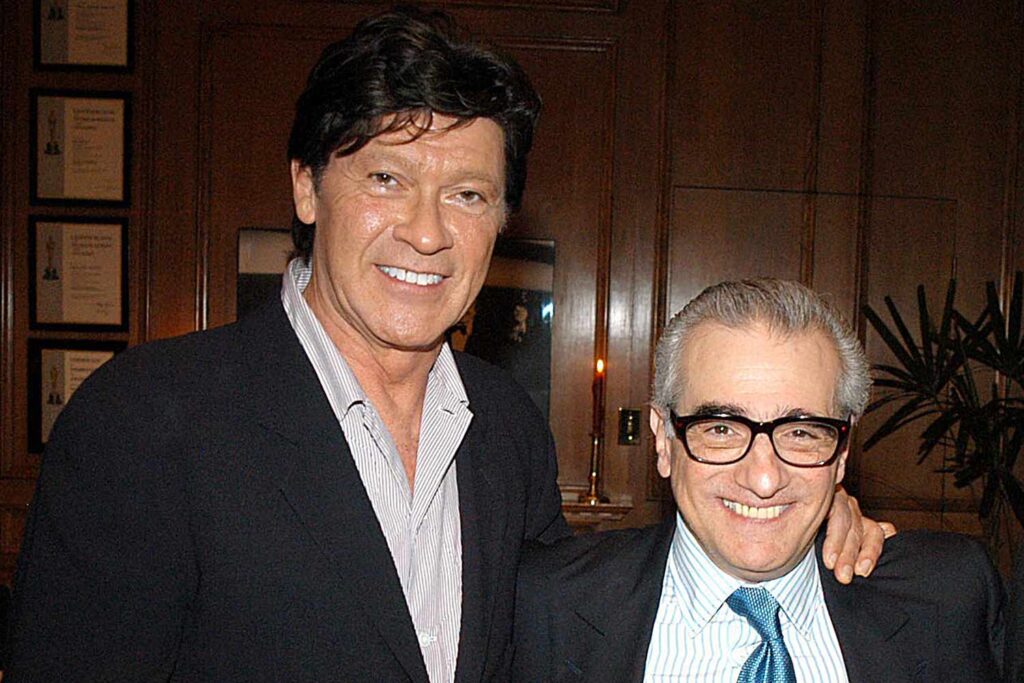Mr. Scorsese — Rebecca Miller’s five-part documentary about Martin Scorsese — isn’t all just Oscars and Palmes D’Or. The series, which features an extraordinary dive into the great filmmaker’s archives plus new interviews with many of his colleagues, isn’t afraid to address the darker moments in the quintessential New York artist’s life. And that includes the time when he was living with musician Robbie Robertson in a drug haze that nearly killed him.
For Scorsese, he’d just finished making New York, New York, which he describes as the first movie that got away from him. (Many contemporary critics have reevaluated the film and determined that it’s “not all bad,” but despite its hit title song, was very much a box office and critical flop in 1977.) For Robertson, the primary songwriter and guitarist with the Band, he was dealing with that group’s dissolution.
RAPH GATTI/AFP via Getty
The housemates were editing The Last Waltz, which documented the Band’s final, guest star-rich concert, and were ingesting Herculean amounts of cocaine.
As Robertson explains in Mr. Scorsese (in an interview filmed shortly before his death in 2023), “It was, ‘Jeez, I’m kinda tired. I’ll have a little bump or something. It’ll just perk us up.’ Some people have an espresso…” He then gave a resolved shrug, realizing after the fact that maybe drugs were not the answer.
Scorsese himself shared, “We were trying to find something. We were trying to find the muse again, I guess. The joke is always, ‘It makes me work better.'” With perfect timing, he added, “Meantime, you’re dead!”
Scorsese wasn’t just going for a joke. Overuse of cocaine and general exhaustion led to a case of internal bleeding, which really did come close to killing him. It was while he was in the hospital that he received a visit from his collaborator and friend Robert De Niro.
The Oscar-winning actor had already approached his pal about adapting a film from boxer Jake LaMotta’s book, Raging Bull. Previously, the director said he wasn’t interested in a sports picture. But when De Niro said, “What, you wanna die in here?!?!” it hit him like a punch to the face. He took a second look at the project and began to form his vision. After the hospital, the two went to St. Maarten together and developed the screenplay. Scorsese later credited the focus on the new work, immediately recognized as a classic, as saving his life.
United Artists/Courtesy Everett Collection
Indeed, later in the docuseries, Scorsese talks about how he met “a famous Native American medicine man” while shooting Raging Bull, who told him that the production had given him new life. “‘You died,'” the director quoted him as saying. “‘In that hospital, before your friend said come out and let’s make this movie, you died. But now you are alive again.'”
Without questioning it, Scorsese remarked that “people die in life and they come back.”
But reflecting on the drug days, the eternal Catholic in turmoil didn’t let himself off the hook.
“The problem is that you enjoy the sin!” he said. “That’s the problem I’ve always had! I enjoy it. When I was bad, I enjoyed a lot of it.”
That’s the honesty of Mr. Scorsese (and Mr. Scorsese) and why films like Taxi Driver, Raging Bull, GoodFellas, The Wolf of Wall Street, and Silence (to name just a few) are masterpieces.
Get your daily dose of entertainment news, celebrity updates, and what to watch with our EW Dispatch newsletter.
Since it nearly killed him, let’s take a second look at the opening credits sequence of The Last Waltz, one of the simplest and still most thrilling of all time, below.
Mr. Scorsese, which premiered at the New York Film Festival on Oct. 4, begins streaming Oct. 17 on Apple TV+.

